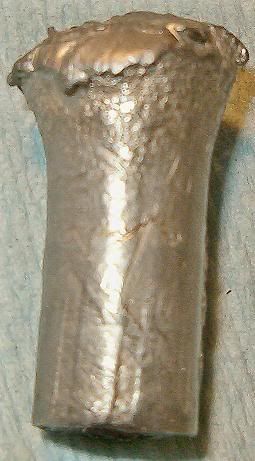I plan to try both ways, Don, to see which is faster...easier...or maybe just more interesting.
So far I am not having problems with torn patches, even when I totally soak the paper.
I found a cheap plastic roller for wallpaper seams at the paint store. Two passes with that puts some stretch on the patch without tearing, and then the heavy wetness makes the patch suck onto the bullet like a magnet.
Yeah, the drying takes longer but it's winter time, so there's no hurry to get 'em loaded.
I'm sure you know that keeping cows happy in cold weather leaves precious little time for shooting...
CM

|
   
   
|


|





 Reply With Quote
Reply With Quote












